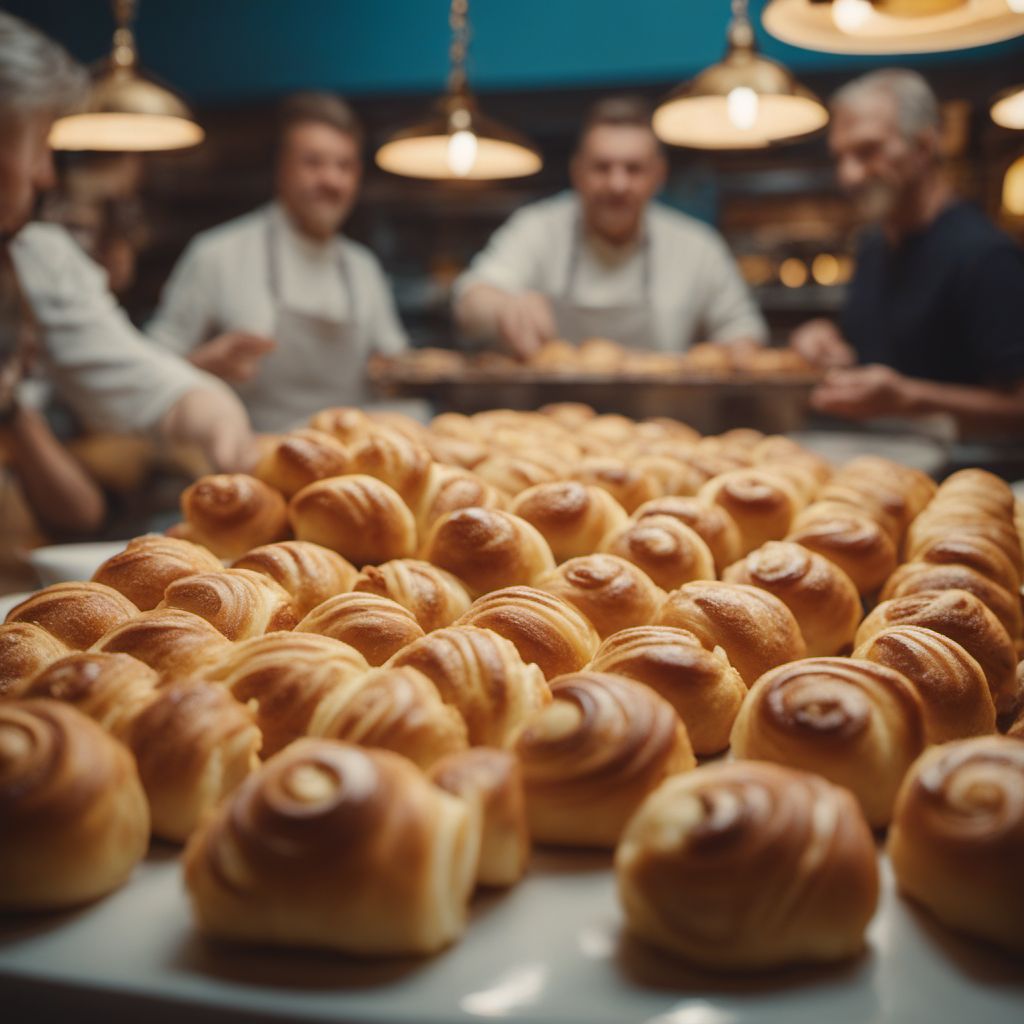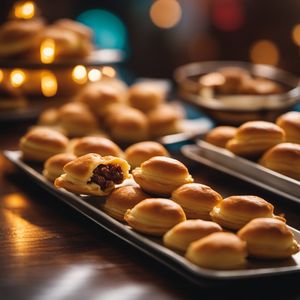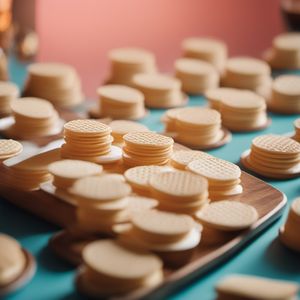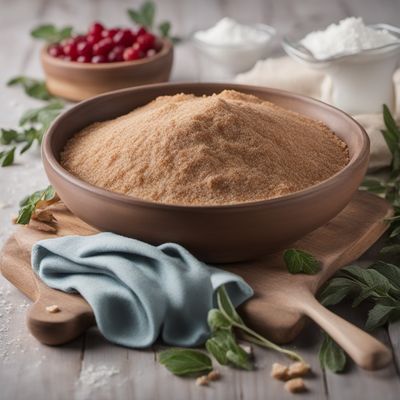
Dish
Andruty Kaliskie
Pastry rolls
Andruty Kaliskie are made from a dough that is similar to that used for many other Polish pastries. The dough is made from flour, eggs, sugar, and butter, and is then rolled out and twisted into small, thin ropes. These ropes are then fried until golden brown and crispy. The pastries can be served warm or cold, and are often dusted with powdered sugar or drizzled with honey. They can also be filled with cheese, meat, or other savory ingredients for a more substantial snack or meal.
Origins and history
Andruty Kaliskie have been a popular snack in Poland for centuries, and are believed to have originated in the town of Kalisz. They are often served at festivals and other celebrations, and are a beloved part of Polish culinary tradition.
Dietary considerations
Andruty Kaliskie are not suitable for those with gluten or dairy allergies, as they contain both wheat flour and butter. They are also high in calories and should be enjoyed in moderation as part of a balanced diet.
Variations
There are many variations of Andruty Kaliskie, including sweet and savory versions. Some recipes call for the addition of cheese or meat to the dough, while others use different types of flour or sweeteners.
Presentation and garnishing
Andruty Kaliskie can be presented in a variety of ways, from a simple dusting of powdered sugar to a more elaborate plating with fruit and other garnishes. They are often served on a decorative plate or platter to showcase their twisted shape and golden color.
Tips & Tricks
To achieve the perfect texture and flavor, be sure to fry the Andruty Kaliskie in hot oil until they are golden brown and crispy. You can also experiment with different fillings and toppings to create your own unique version of this classic Polish pastry.
Side-dishes
Andruty Kaliskie can be served on their own as a snack or dessert, or as part of a larger meal. They pair well with cheese, cured meats, and other savory snacks.
Drink pairings
Andruty Kaliskie are traditionally served with tea or coffee, but can also be enjoyed with a glass of milk or a sweet dessert wine.
Delicious Andruty Kaliskie recipes
More dishes from this category...

Cubanitos
Spanish cuisine

Hořické Trubičky
Czech cuisine

Karlovarské Oplatky
Czech cuisine

Karlovarské Trojhránky
Czech cuisine

Krumkake
Norwegian cuisine

Mariánskolázeňské Oplatky
Czech cuisine

Obleas
Spanish cuisine


